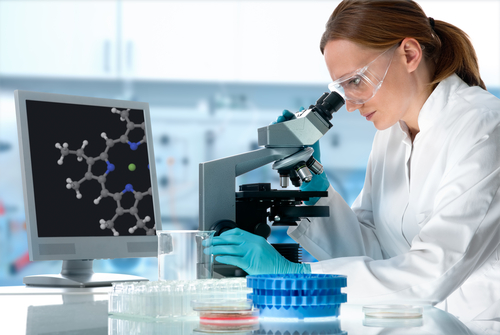Method of Blocking Kallikrein Could Help Develop Better HAE Therapies, Study Suggests
Written by |

The unique mode each specific compound binds to and blocks the enzyme plasma kallikrein could lead to the development of improved therapies for patients with hereditary angioedema (HAE), according to a new study.
The research, “Structures of full-length plasma kallikrein bound to highly specific inhibitors describe a new mode of targeted inhibition,” was published in the Journal of Structural Biology.
HAE is a rare genetic disorder characterized by sudden and recurrent episodes of swelling in the deeper layers of the skin, the upper airway, and the gastrointestinal tract.
The disease is caused by genetic mutations in the SERPING1 gene, leading to lower levels of C1-inhibitor (C1-INH), as in the case of HAE type 1, or to a dysfunctional C1-INH whose levels remain normal or elevated, which is the case in HAE type 2.
In both cases, the lack of a functional C1-IHN leads to the continuous production of the enzyme kallikrein, which subsequently increases bradykinin levels. Bradykinin is a peptide that regulates blood pressure and inflammation by dilating blood vessels; its overproduction is the main cause of HAE attacks.
Because treatments for HAE providing C1-INH replacement do not completely prevent acute attacks, scientists have been shifting their focus to strategies that block kallikrein. However, developing a small molecule specific for this protein has been challenging due to its similarity to other enzymes of the same family (serine proteases). Nonspecific inhibition of a different enzyme could lead to uncontrolled coagulation and/or bleeding.
The Global Blood Therapeutics team addressed this problem by characterizing two reported small molecule inhibitors of kallikrein: Novartis‘ compound 1 and BioCryst’s avoralstat. Previous data suggested both those molecules as potent and specific kallikrein blockers.
The scientists used an approach called “X-ray crystallography” to study these compounds’ structure and explain their variable specificity using both full-length human kallikrein and the enzyme’s protease domain, which refers to the portion responsible for breaking down high molecular weight kininogen into bradykinin.
Although their potency was similar, only compound 1 showed specificity for kallikrein. Then, the investigators were able to determine the precise amino acids (the building blocks of a protein) to which compound 1 binds, as well as the conformation changes — a so-called induced fit mechanism — that kallikrein experiences to accommodate this blocker.
This unique binding mode of compound 1, along with variability in the amino acid sequence explain this blocker’s approximately 10,000-fold higher specificity for kallikrein over structurally similar enzymes.
Of particular importance is the amino acid at position 480(99) of the targeted enzyme. In kallikrein, the amino acid in this position is glycine, while the related enzymes factor Xa, thrombin, and trypsin contain larger amino acids, which clash with compound 1 and preclude its binding.
Overall, “this newly described binding mode provides a starting point for the design of potent compounds that could potentially be dosed orally and result in a new standard of care for the treatment of HAE,” the scientists wrote.





